Interview with Jimmy Ballard
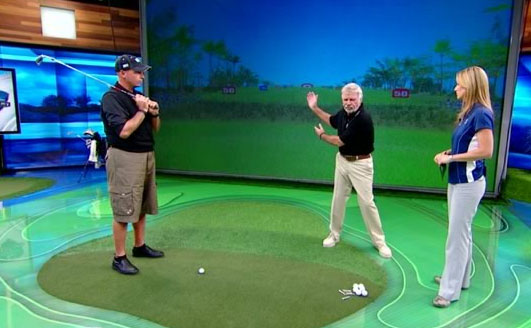
Last week, I had the opportunity to interview the legendary, but often overlooked, golf instructor Jimmy Ballard. If you are not familiar with Jimmy Ballard, his impressive resume is outlined here and here. In short, Ballard’s methods are often summed up in one word, “Connection.” While everyone knows who Haney, Harmon and Foley are, the lesser known Jimmy Ballard’s list of students is a virtual who’s who of winners including Curtis Strange, Hal Sutton, Jim Colbert, Rocco Mediate as well as Jesper Parnevik and Annika Sorenstam (via his work with the Swedish golf program). Moreover, Jimmy worked with these players at the height of their careers, so while Jimmy may not have the name cache as other famous coaches, he has a winning resume that would stack up against the best of them.
My introduction to Jimmy’s teachings came via my work with Jim Colbert, who impressed upon me the simplicity of Ballard’s method. Years later, I am still a huge fan of the Ballard swing and have written a number of posts in regard to his theories. Unlike many instructors, Jimmy Ballard has never wavered from his teaching methods (in fact they have essentially stayed the same for over 40 years). Having been a student and fan of Jimmy for so long it was a true pleasure to get to speak with him. Below is our conversation.
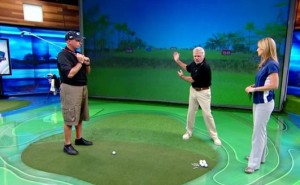
Jimmy Ballard with Rocco Mediate
TGGB: I have long been encouraged by your methods and trying to let more folks know about you and your teaching. Particularly since I herniated a disc in my lower back, I’ve been working on your swing, because the way it is more upright and easier on my joints, I’ve recommitted myself, and it’s been very helpful.
J. Ballard: Well, if you’re injured, you have to take care of that, but we do think that this swing is more athletically correct, and works the way that your joints are intended to work, and that’s a good thing to avoid hurting yourself any further.
TGGB: When did you start putting your teaching method into it’s current form, was it during your time working with Sam Byrd or after, and what inspired you to do it?
J. Ballard: Everything I learned about the golf swing, I learned from Sam Byrd. Sam’s thoughts and method of teaching made sense to me. I knew he was right, even if he wasn’t always the greatest communicator—although I still learned from him… you know he really helped Byron Nelson. Nelson said that he didn’t really understand his swing, but that Sam could help him if he got a little stuck… most people, even the great players don’t understand their own golf swing, and will tell you that they are doing things that they simply are not doing. I can just see it in people, and I always have been able to. I got my first video camera in 1980 or so from John Brodie, (SF 49ers football quarterback who played on senior tour), and finally, I could show people what they were actually doing, that they said they didn’t do. And I have worked with professionals who I told were doing something in their swing, and they would say, Jimmy, I don’t do that. And I would show them film or a video and show them that they were wrong about what they actually did.
TGGB: Many believe that your teaching about the swing is the most logical, and the most fundamentally sound. But many teachers teach a swing that seems to have a lot more timing and moving parts than your swing, particularly in the area of forearm rotation, where your swing basically removes this from the equation. Is it partially related to this current pursuit of distance on tour? Why do most teachers seem to ignore the amount of timing that comes from forearm rotation, when you so clearly demonstrate that this adds ‘angles’ and extra timing to any swing?
J. Ballard: People are teaching that the spine stays in the center of your swing, and you rotate around it. That’s simply impossible with two hip joints, and I’ve been to MIT, and they told me that I was correct. All of this forearm rotation, and conversation about plane is not the way that your body works correctly in an athletic motion. You have to get into the middle of your right leg on the way back—or on the inside of the right hip joint—Hogan wrote in a letter that on the backswing he tried to touch his left knee to the inside of his right knee, or he wrote in a letter I have, ‘my left knee moves right until the inside of my left thigh pinches my right nut against right thigh’— so pressure building on the inside of the right thigh with the knee flexed, and then you have to get back on your left side on the way through; it’s the only way the swing can work. (EDITORS NOTE: only at Three Guys Golf do find out that Hogan used his left nut as a swing reference).
Tiger was really lost with Hank Haney, but this business of not moving back, and rotating in one spot that this new guy is talking about isn’t helping things much at all either, and it’s why Tiger’s bent over and he’s got so much forearm rotation. They are teaching something that doesn’t work. I told Leonard Thompson on the day that David Duval shot 59 that he was done… and he said, ‘what are you saying, the guy just shot 59’ and it was very soon after that that his swing fell apart and he’s never played well since then. And that happened to Curtis, and Seve and Sandy Lyle… they played their best and won majors when they were working with me, and they haven’t really played well since they left.
People teach the plane of the golf swing in all kinds of ways, but the plane of the golf swing simply means swinging it on the plane that goes from the club head through the shaft to the center of your body. Hogan and Colbert were shorter, so their swing plane was where the shaft would point more at the line the ball was on, and Rocco and Hal Sutton are taller, so their shaft points more to the line that their feet were on. Annika’s swing was just like Hogans, but they finally saw it in Annika’s swing and called it the upright swing, but it really is the same as Hogan’s.
In terms of distance, I taught De Witt Weaver and Jim Dent, and although they weren’t the best golfers ever, they both were very good ball-strikers, and nobody, and I mean nobody hit it further. These guys hit it as long as you want. People who say that a ‘shorter’ left arm is restrictive and won’t allow you to hit distance just don’t understand what they are talking about.
TGGB: The optical illusion in golf with the ‘railroad tracks’ used to align your feet left of the target, if you’re a right-handed player, seems to be the toughest thing to get most people to do on the golf course, maybe even tougher than left-arm connection. In other words, most people line up with their feet and shoulders pointed at the target, if they really line up at all. Also, I’ve noticed that getting my back to the target is much tougher under pressure. Besides pre-setting your head to the right, any other help for me on this idea?
J. Ballard: If you tell most people to hit it down the line, they won’t have their left arm against their body with their elbow down and they will not be able to get into the correct position to throw their right arm down the target line, because of the incorrect left arm. But if you understand that, then you have to understand that the feet have to be set up correctly, and Hogan said it well, that you have to have your right foot square, or even turned in a bit, to keep the tension in your coil, so that you can push off properly, and then release the club down the line. And this goes back to the proper posture, where you have to have your fanny underneath you, not poking out. You have to be tall and have the correct posture, so your legs can work in the swing, so that you can coil correctly and get the club on the proper plane, and then you can throw the club down the target line. If you don’t get setup correctly with your butt underneath you, then your legs can’t coordinate, and you can’t make a proper coil, and you can’t throw the club down the target line.
The business of golf is designed around this idea that you need something new all the time. That’s how they sell their magazines and their equipment. But the fundamentals of golf haven’t changed, and you can see the pieces in all of the great ball-strikers throughout time.
TGGB: Thank you for your time today, and we hope you know that one of my goals is to keep people informed of the work that you are doing, and your ideas that we have found so helpful.



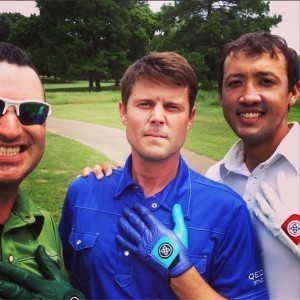






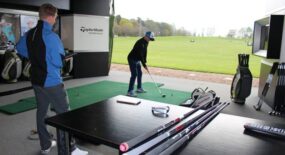




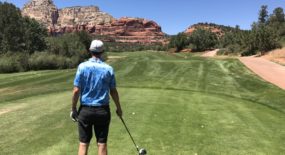







You are spot-on about Jimmy Ballard. He is and has been the best teacher in the Country for a long, long time! I first saw Jimmy when he was teaching at the Pine Harbor CC in Pell City, Alabama and had the opportunity to see him on two occasions. Nobody has ever explained the golf swing better than Jimmy. I am an amateur and have won my club championship numerous times and now three straight years as the Senior club champion.
I have just spent 30 years as a police officer and am retiring this summer and can’t wait to play more often especially since I know what to do concerning the golf swing. It amazes me to this day when I hear other golfers tell someone to keep their head down or there left arm straight or to turn when they’re swinging. They don’t have a clue!! Thank you for this great interview.
Hey Joe, Thank you for your kind comments on the interview, and for relating your experience with Jimmy’s teaching. Sounds like you’ve put his swing to really great use! We are trying to get the word out about his methods, and with Rocco’s recent success, we are hoping that more people will hear about Jimmy and benefit; and that they’ll play more enjoyable golf that’s much easier on their bodies. I also hope it goes well as you get more time to play in your retirement.
Thanks Wade…I talk Jimmy up all the time. Our young asst. pro finished 10th in the Maryland Open in 2012 after I explained to him how to connect his left arm to his body. He said nobody ever told him that and he immediately began to stripe it!
Does Jimmy ever come north a little bit like in the Carolinas or somewhere closer to teach? I would very much like to see him again and could probably bring a few friends to take lessons.
When I tell my friends about his relationship with Sam Byrd and the New York Yankees they look at me like I’m crazy but I know every word of it is true.
Take care my friend and please let me know if there is anything I can do to help Jimmy or you…….
My understanding is that Jimmy is working with Rocco on a regular basis, but I’m not sure how far he is traveling to do it. If we find out that he is in the Carolinas, and is willing to chat with some of us that are such big fans, we’ll shout it out on our blog. Thanks again, and let us know if there are some aspects of the Ballard swing that you think we can shed some more light on.
I think the public needs to see Jimmy more like the recent take on the senior tour on the range with Rocco. Most golfers just don’t understand the concept of you can’t turn from two points. They twist their hips rotate the club which then is out of center and they are in trouble.
I like his idea of putting the butt end of the club in your sternum and make swings so the club always stays in center with the arms connected to the body. If I ask a person what reverses the club from the top the answers I get are incredible. Not many people know the club is reversed with the feet and legs not the hands and arms. In other words the body controls the arms and can handle the pressure. Or as Jimmy likes to say, “I believe the dog wags the tail.”
I wish for the same thing with Jimmy. We loved his show with Rocco on the Golf Channel’s Twelve Nights at the Academy a few years ago. There’s also a video posted on Youtube of him giving his normal intro lecture to a small group of folks that is about 40 minutes long, and excellent. It’s titled “ballard day” and he has his photos, and all of his explanation of no stiff left arm, how to move the whole shoulder, how to shift weight and not sway, and the rest.
As for your comment on the sternum,or center, Colbert showed that to me many years ago. And along with the split grip, and the idea of tossing something heavy like a medicine ball underhanded, this idea of the club connected to the sternum or center is key. Have you seen the new Golf Swing Shirt? It really helps with this, too.
But I’ve also found that what you are saying is true regarding the downswing. The stronger someone is in their upper body, the harder it can be for them to understand. The upper body has to follow the lower body on the downswing, as you are saying, and if people are able to actually step onto their left foot from their right, they can start to feel it, but when they keep their feet and legs really locked to the ground, and don’t use good footwork or use their hips, they are only left with their arms to try and hit it. And you have expressed this well already. Thanks! And we’ll try to do our best to keep on letting folks know that the golf swing is no more and no less than a coordinated athletic motion like hitting a tennis ball or a baseball or a hockey puck.
Jimmy Ballard is the best teacher in golf. I have followed his method for over 35 years. It works, is simple, and best of all easy on the body.
A 35 year disciple! That’s great, and we really appreciate your comment here. It was so great to see Rocco take his methods and have a 7-shot victory this past weekend. And I couldn’t agree more about easier on the body– that get’s more and more important, doesn’t it?
I started subscribing to the Ballard swing after I caught him and Rocco on the golf channel Twelve Nights at the golf academy when I was having terrible soreness and pain in my mid back from golfing. Once I got the basics of his swing idea down I was able to get all of the tension off my lower and mid back. It seems to me the Ballard swing really prohibits over rotation in the back swing. But, it is very difficult to keep his ideas and principles without LOTS of practice and reference materials which are hard to come by. There seems to be a lot of the newer teachers, and I believe I have even heard more than one of the golf channel talking heads, who are really down on his methodology which is something I can’t quite understand. Everything the guy says seems to make sense to me.
One other thing…great article guys. Really enjoyed the read.
Thanks for taking the time to read our post, and for commenting. I’m glad that it’s been helping with your back pain, and it’s certainly done the same for me. I agree that it can be hard to find information on the Ballard swing, and that’s a big part of why we’ve been trying to let people know what we’ve learned. If you’d ever like to have a conversation via email or over the phone, I’d be glad to give you more information on why, I believe that many in today’s game are down on Ballard’s swing methods– or maybe just don’t like him personally. One more thing, I do agree with Rocco that the swing gets much easier, but when we’ve spent a long time training our body another way, change really takes time and significant energy.
Enjoyed the article on the interview with Jimmy Ballard from 7/11/12… I had heard about and looked at Jimmy’s swing thoughts many years ago, but,for whatever reason didn’t adapt to them. Happened on to some instructional videos & saw one of Jimmy’s, this week. Maybe I am getting smarter as I age, but, it made a lot more sense to me now, and I have been trying to find out as much as I can as I see it’s merit !!
I have a question; In the videos with Rocco, I see his right foot still flat on the ground considerably longer after his right shoulder and hip have fired. Is the push off of the right foot and firing of the right side simultaneous or not??
One other question – are there any new videos or interviews on these swing thoughts by Jimmy ??
Thanks,
Ken Najarian
Hi Ken, Thanks for taking the time to comment, and for your interest in the Ballard ideas. I may not be understanding your question, so feel free to correct me. I think you’re interested in the idea of how long your right foot stays on the ground relative to the firing of the right side. There is no question that Ballard teaches that the downswing begins from the ground up with a push off the inside of the right foot and is felt in the right big toe. Ballard’s mentor Sam Byrd kept his foot ‘flat’ on the ground as he was pushing off, but like a baseball pitcher pushing off the mound, he had rolled to the inside of the foot, and was pushing off of that. You can see it in the way his right knee and hip moved ahead of his right shoulder. So the sequence is just like throwing, where there’s a push off the right side from the ground up, that causes your weight to go to your left side, the left hip to clear, and your right hip leads the unwinding and throwing of the whole right upper body. Some people keep their right heel down a bit longer than others, but that’s not the best indicator of whether or not the right side has fired. Speaking of video, have you seen Ballard Day on youtube? You probably would enjoy Jimmy going over his normal introductory thoughts with students here:http://www.youtube.com/watch?v=fPlXggMYXHY
Hi Mr. Baynham, great article with Mr. Ballard. Have always been a big fan of his. What happened to the youtube video “Ballard Day”? Seems to have been taken down
Ballard is spot on I started with his videos and book in about 1988 or so and was an excellent ball striker long and straight generally. I got up in different theories trying to improve and went backwards some times I got better but age and injury slowed me down. I went back to strictly the Ballard motion and in days saw my distance increase as well as direction. I am 67 years old and had a stroke ten years ago and lost a bit of my strength of course. Well I went out in Niagara falls a week ago and hit a number of drives in the 260 range with the final one on 18 290 to 300 yrds modest tail wind. not bad for an old guy. thanks to Jimmy Ballard I should have have a few more years of driving the ball like the young fellows
Really enjoyed reading all these pieces on Ballard. I worked for Jimmy Ballard from ’86 to ’89 at Doral Hotel in Miami,Fl. I came to California and opened up a Golf school at Tustin Ranch in ’90 under the direction of Ballard and Jim Colbert. Recently, I spent 2 days in Seattle with Jimmy. He’s re-doing videos for his website. Jimmy hasn’t changed one bit. Still elbows down, coil into right leg, right foot and leg start the change of direction, straight balance finish. Jimmy knows so much about the golf swing… It’s amazing! We are now in the process of opening up a Colbert Ballard golf school in Southern California …again under the direction of Jim Colbert and Jimmy Ballard. Please contact me for more information or questions about Jimmy Ballard. Again… Really enjoyed this blog on Ballard.
Hey Andy! One of favorite all time people in golf. Really enjoyed working with you on Colbert Ballard and wish you all the success in the world. Had dinneer with Jimmy and Laurie last week in Chicago. Harry
How do I get videos on Jimmy Ballard teaching
Its pretty hard. You can find some on youtube.
Jimmy shroud have his new website up soon with an abundance of new videos and old master stuff.